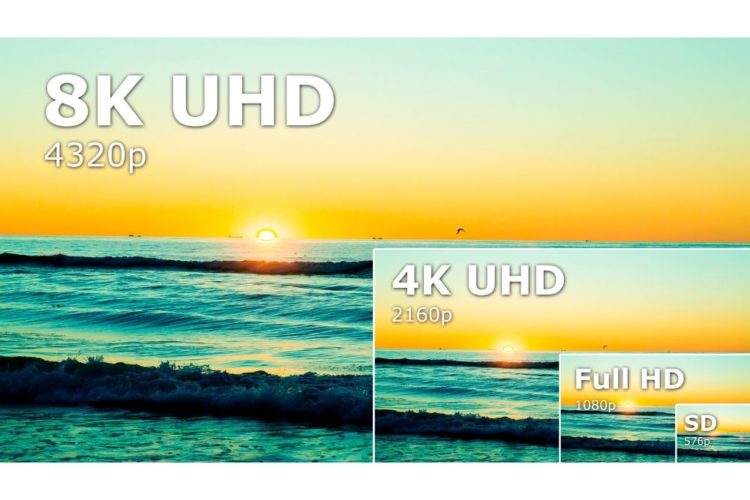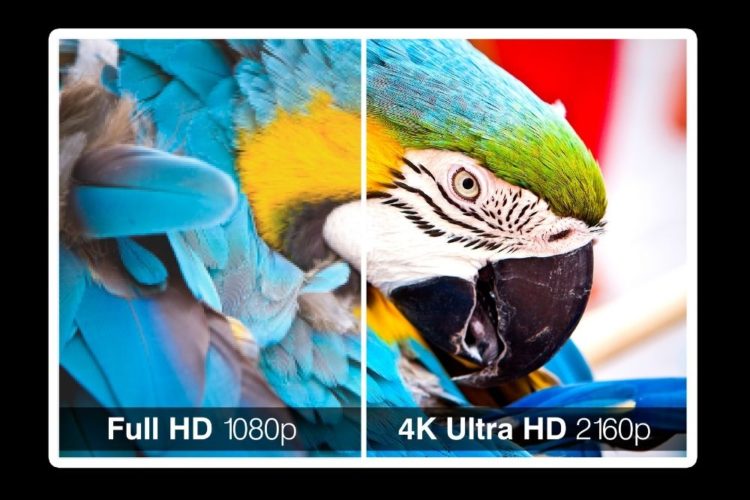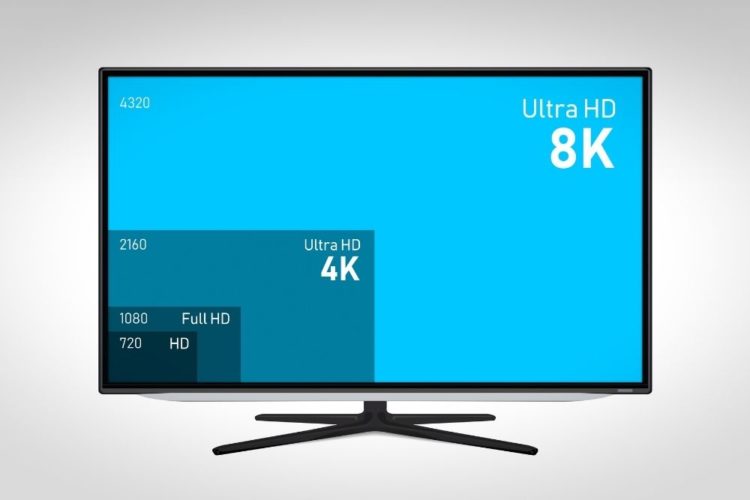Understanding 4K Image Size: A Detailed Look at Resolution

What To Know
- There are two primary 4K resolutions: 3840 x 2160 (commonly used for TVs and monitors) and 4096 x 2160 (used in digital cinema).
- A 4K image’s size depends on its resolution, bit depth, and whether it’s compressed or uncompressed.
- An uncompressed 4K photo typically occupies 24 MB of storage, while its size varies between 1.2-14 MB when compressed.
This article provides essential insights into managing 4K content, ensuring you’re equipped to handle, convert, and store your high-resolution images and videos effectively.
Now, let’s unpack the intricacies of 4K imagery without further ado.
Quick Navigation
What is the size of a 4K image (pixel x pixel)?

When it comes to 4K images, we have two sizes: 3840 x 2160 and 4096 x 2160.
The first number in the pixel equation represents the horizontal resolution (width), while the second indicates the vertical resolution (height).
Feeling a little confused?
Don’t be. We’ll explain the difference and the reason behind the variation..
3840 x 2160

3840 x 2160 is the resolution of choice in the display segment of the A/V market. You’ll find this size in TVs, monitors, projectors, and other displays used in office settings, homes, and other personal use spaces.
Images of this 4K size have a total of 8,294,400 pixels and support the full-frame aspect ratio of 16:9.
The 3840 x 2160 standard meets the 4K/UHDTV/Ultra HD specifications outlined by the Society of Motion Picture and Television Engineers (SMPTE) in SMPTE ST 2036-1:2014, the International Telecommunication Union (ITU), and Consumer Technology Association (CTA).
On products, 3840 x 2160 4K mostly have a UHD 4K label.
4096 x 2160

Resolution 4096 x 2160 is almost exclusive to the digital cinema section of the market. It’s what movie producers use in their productions.
This resolution has 8,847,360 pixels in total and a 1.90:1 aspect ratio.
But there is more.
Under 4096 x 2160, we have two additional standard resolution sizes: 3996 x 2160 and 4096 x 1716.
The narrower and taller resolution, 3996 x 2160, caters to the flat aspect ratio (or 1.85:1).
And 4096 x 1716, the broader and shorter crop, supports the wide 2.39:1 aspect ratio.
The 4096 x 2160 4K standard meets Digital Cinema Initiatives, LLC (DCI) specifications and usually comes with a DCI 4K label.
There have been additional 4K sizes used in different applications over time, but these are non-standardized and uncommon.
How big is a 4K image in inches?
4K image size depends on the size of your display screen and is, in fact, directly proportional to screen size.
On a small screen, the image will appear small in size. But on a bigger screen, it becomes enlarged.
One thing you have to remember is that the resolution remains constant whether you’re viewing on a small or large screen.
Images displayed on a smaller screen appear sharper since they only fill a small space and, therefore, can pack more pixels.
Images displayed on large screens, on the other hand, appear less sharp and somewhat blurred because they have to spread the available pixels across a much bigger space.
The further you move away from the screen, the more noticeable this blurriness becomes.
To determine the height and width dimensions of the image, you must first work out its pixel density, which is an expression of the number of pixels per inch (PPI).
Next, divide the horizontal pixel resolution by the PPI to get the width of a 4K image in inches.
And finally, divide the vertical pixel resolution by the PPI to get the height of the image.
Take the diagonal screen size and the pixel resolution and then apply the Pythagoras’ Theorem formula to calculate PPI.
* Display makers indicate the diagonal screen size in the display user manual, so check in the booklet for yours.
Let’s calculate the 4K image size on 75 and 60-inch screens. We’ll assume both displays have a 3840 x 2160 resolution.
Step 1: Calculate the PPI

Our formula will be:
Square root of √(Horizontal resolution² + Vertical resolution²) divided by screen size in inches.
So for our 75-inch screen, we’ll have:
√(3840² + 2160²) divide by 75
PPI = 58.74
And for our 60-inch screen, we’ll have:
√(3840² + 2160²) divide by 60
PPI = 73.44
Step 2: Calculate 4K image size (in inches)
Our formula for this is image width/height in pixels divided by PPI.
For our 75-inch screen:
Width = 3840 / 58.74, which equals 65.37 inches
Height = 2160 / 58.74, which equals 36.77 inches
For our 60-inch screen:
Width = 3840 / 73.44, which equals 52.29 inches
Height = 2160 / 73.44, which equals 29.41 inches
Therefore, on a 75-inch, the 4K image will measure 65.37″ x 36.77″, and on a 60-inch display, it will measure 52.29″ x 29.41″.
How many MB is a 4K image?

To get the size of a 4K image—technically identified as a frame—in megabytes (MB), multiply the total number of pixels by the size of one pixel.
To get total pixels, multiply the horizontal resolution by the vertical resolution. So 3840 x 2160, gives us 8,294,400.
Next, calculate how big a pixel is. Pixel size depends on bit depth, or color depth, which is the color information one pixel can store.
In video formats, color information refers to the RGB (Red, Green, Blue) color model, and each color is a channel. The color details of each RGB channel are called bits per channel.
To get bits per pixel, we’ll multiply the color depth by the number of channels.
In our example, we’ll use the 8-bit which was the standard bit amount per channel used to process images for a long time. It’s still the most widely used color depth. So in this case, we’d have 8 x 3 = 24 bits.
As we’ve mentioned, image size = total pixels x size of one pixel. In our case here, that’s 8,294,400 x 24 = 199,065,600 bits.
We now have to convert these bits to megabytes. We do that by first converting the bits to bytes.
1 byte = 8 bits, so our 199,065,600 bits divided by 8 give us 24,883,200 bytes.
Then we convert the bytes to kilobytes.
1 kilobyte = 1024 bytes, so 24,883,200 bytes divided by 1024 gives us 24,300 kilobytes.
And lastly, we convert the kilobytes to megabytes.
1 megabyte = 1024 kilobytes, so 24,300 kilobytes divided by 1024 gives us 23.73 MB.
Therefore, a 4K image would have a data size of approximately 24 MB.
Images with a higher color depth contain more information. Because of this, they are notably bigger than those with a low bit depth. If your 4K video frame has a 10 or 12-bit color depth, it will be bigger than a 24 MB 8-bit image.
How much storage does a 4K photo take?

The amount of storage a 4K photo occupies depends on the format in which you store it. In uncompressed TIFF format, the photo would take up 24 MB of storage on average.
If you save it as a lossless TIFF LZW file, it will take up 14 MB of space. As a lossless PNG24 file, it takes up 11 MB of space.
Should you choose to compress the file, it will take up 1.2-4.8 MB of space, depending on which format you choose.
In Conclusion
The size of a 4K image depends on resolution, where a 4096 x 2160 image would be large compared to a 3840 x 2160 image.
4K image size also depends on bit depth. Images with a higher bit depth are typically larger than those with a lower bit depth.
Higher bit depth, in turn, means they occupy more storage.
If storing your image as an uncompressed photo, it will take up more space than it would if you kept it in a compressed format.
That said, the average 4K photo takes up 24 MB of space when uncompressed and 1.2-14 MB when compressed.
Meet Vance. He’s a proud dad, a seasoned Electronics Engineer, and an avid tech lover. His proficiency in electronics and troubleshooting skills were instrumental in crafting Pointer Clicker. Vance is passionate about simplifying tech for those who aren’t well-versed in it.

